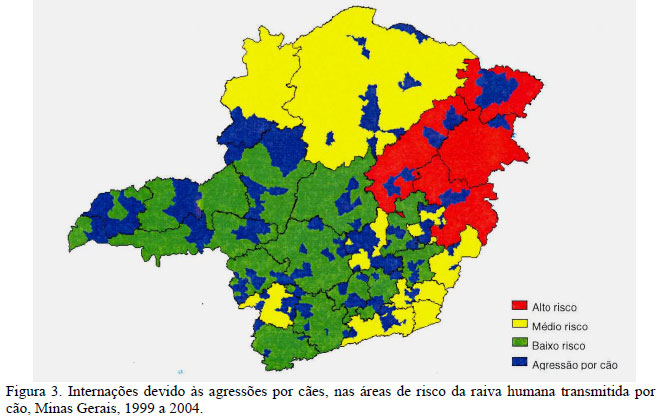The objective of the present paper is describe and evaluate dog bite and some aspects of anti-rabid human care in Minas Gerais during five years, correlating the sources of information and epidemiological risk areas defined for human rabies transmitted by dogs in the State. We performed an observational retrospective study by adapted exploration form analysis, from 1999 to 2004, using databases of Epidemiology of Minas Gerais and National Information Systems of reportable disease, Immunization, Mortality, Hospitalization, International Code of Diseases (10th revision). The areas of risk for human rabies transmitted by dogs were pre determined. The dog bite is still the main complaint that leads to care. The profile of the patient is a male student, under 14 years of age, with a single wound in members, resident in an urban low risk area for human rabies transmitted by dogs, and is healthy and observable. The treatment is excessive in areas of low and medium risk. In high-risk areas, there is a low indication of treatment. Information systems do not offer the reliability required by the doctor responsible for prescribing the appropriate anti-rabies treatment. Rabies prophylaxis should have a multi-centre aspect, with interfaces in attention to health and veterinary, which has not occurred, providing surveillance failures.
rabies; anti-rabies care; surveillance; dog bite




